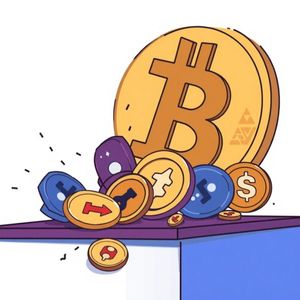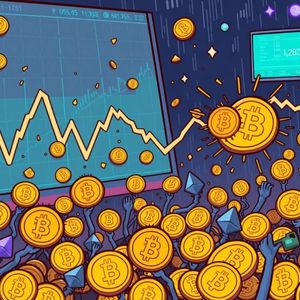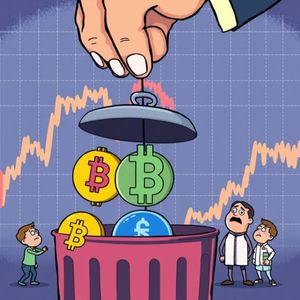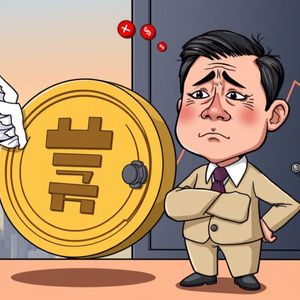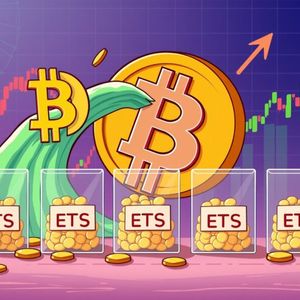BitcoinWorld Crucial Update: Binance Alpha Delisting 18 Tokens Explained The cryptocurrency world is constantly evolving, and staying updated on platform announcements is crucial for every investor. A significant development recently emerged from Binance Alpha, which has announced the Binance Alpha delisting of 18 tokens from its platform. This move, shared via their official X account, signals important changes for holders of these specific digital assets. For many, such news can be a cause for concern or confusion. However, understanding the implications and knowing the steps to take is key to navigating these shifts in the market. Let’s delve into what this announcement means for you and the broader crypto ecosystem. What Does the Binance Alpha Delisting Mean for You? When an exchange announces a delisting, it means that particular digital asset will no longer be supported for trading on that platform. In this instance, Binance Alpha will cease trading support for a diverse range of 18 tokens. The affected tokens include CA, HAT, Aimonica, House, LMT, degenai, ALON, RIF, LUCE, ASRR, YNE, MAXONSOL, GRIFT, URO, PAIN, vvaifu, HAPPY, and MCH. While trading ceases, the platform has clarified that selling these tokens will still be supported after the official delisting date. This provides a window for users to manage their holdings. It’s important to differentiate between delisting and outright removal. Delisting primarily impacts liquidity and accessibility on the specific exchange. Holders often retain ownership of their tokens and can typically withdraw them to another wallet or exchange that supports the asset. Why This Binance Alpha Delisting? Understanding the Reasons Token delistings are not uncommon in the fast-paced crypto market. Exchanges like Binance Alpha regularly review listed assets to ensure they meet specific criteria for quality, performance, and compliance. Several factors often contribute to a Binance Alpha delisting decision: Low Trading Volume and Liquidity: Tokens with consistently low trading activity can create a poor user experience and tie up exchange resources. Project Inactivity or Lack of Development: If a project shows little to no progress, development, or community engagement, it may be deemed unsustainable. Regulatory Concerns: Evolving regulations can sometimes lead exchanges to delist tokens that might pose compliance risks in certain jurisdictions. Security Issues or Vulnerabilities: Any identified security flaws in a token’s smart contract or network can lead to its removal to protect users. Violation of Listing Agreements: Projects must adhere to specific terms set by the exchange, and failure to do so can result in delisting. While Binance Alpha’s specific reasons for each of these 18 tokens were not detailed in the announcement, these general criteria typically guide such decisions. This proactive approach helps maintain a healthy and trustworthy trading environment for its users. Actionable Steps After the Binance Alpha Delisting Announcement If you hold any of the 18 tokens affected by the Binance Alpha delisting , it’s crucial to act promptly. Here’s a breakdown of what you should consider: Identify Your Holdings: First, check your Binance Alpha wallet to confirm if you own any of the delisted tokens. Review Delisting Schedule: Pay close attention to the exact delisting date and any specific deadlines for selling or withdrawing your assets. Consider Selling: Since selling will still be supported, you might choose to sell your tokens on Binance Alpha before the full cessation of services for those assets. This allows you to convert them into a more liquid asset like USDT or another supported cryptocurrency. Withdraw to Another Wallet: If you prefer to hold your tokens, or if you plan to trade them on another exchange, you should withdraw them to a personal wallet or another exchange that supports the token. Ensure you use the correct network and wallet address to avoid loss of funds. Research Other Exchanges: Investigate if other reputable cryptocurrency exchanges still list and support trading for your specific tokens. Proactive management of your portfolio is essential during such announcements to minimize potential losses and maintain control over your digital assets. The Broader Impact of Binance Alpha Delisting on the Market A Binance Alpha delisting of multiple tokens, especially from a prominent platform, can have ripple effects beyond the immediate holders. It often signals a tightening of listing standards across the industry, encouraging projects to focus more on fundamental value, security, and sustained development. For the broader market, these delistings contribute to a more mature and discerning ecosystem. Investors are increasingly looking for projects with strong fundamentals, active development, and clear use cases. Consequently, exchanges are responding by refining their offerings to provide more reliable and compliant investment opportunities. This trend encourages greater scrutiny from both investors and exchanges, ultimately pushing the entire cryptocurrency space towards higher quality and greater sustainability. While individual delistings can be disruptive for some, they often serve as a necessary cleansing process for the market. In conclusion, the recent Binance Alpha delisting of 18 tokens is a significant event that underscores the dynamic nature of the cryptocurrency market. It highlights the importance of staying informed, understanding the implications of exchange announcements, and taking timely action to manage your digital assets effectively. By remaining vigilant and adaptable, you can navigate these changes successfully and continue to participate in the exciting world of crypto. Frequently Asked Questions (FAQs) 1. What exactly is a token delisting on a crypto exchange? A token delisting means that a cryptocurrency exchange, such as Binance Alpha , will no longer support the trading of a specific digital asset on its platform. While trading ceases, users typically retain ownership of their tokens and can withdraw them. 2. Which specific tokens are affected by this Binance Alpha delisting? The delisting affects 18 tokens: CA, HAT, Aimonica, House, LMT, degenai, ALON, RIF, LUCE, ASRR, YNE, MAXONSOL, GRIFT, URO, PAIN, vvaifu, HAPPY, and MCH. 3. Can I still sell my tokens after the delisting announcement? Yes, Binance Alpha has stated that selling the affected tokens will still be supported after the delisting. However, it’s crucial to check the specific deadlines and consider doing so promptly to avoid potential liquidity issues. 4. What should I do if I hold one of the delisted tokens? You should immediately identify your holdings, review the delisting schedule, and either sell your tokens on Binance Alpha or withdraw them to a personal wallet or another exchange that supports the asset. Always ensure you use the correct network and wallet address for withdrawals. 5. Why do crypto exchanges like Binance Alpha delist tokens? Exchanges delist tokens for various reasons, including low trading volume, project inactivity or lack of development, regulatory concerns, identified security issues, or violations of listing agreements. These actions help maintain a healthy and secure trading environment. Did you find this article helpful? Share it with your friends and fellow crypto enthusiasts on social media to keep them informed about crucial market updates and help them navigate the ever-changing world of digital assets! To learn more about the latest explore our article on key developments shaping cryptocurrency market price action. This post Crucial Update: Binance Alpha Delisting 18 Tokens Explained first appeared on BitcoinWorld .


